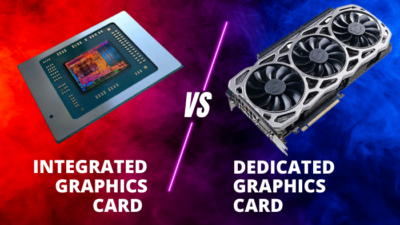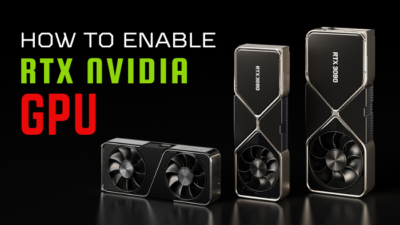Although most PC components currently have a failsafe feature that automatically shuts down the system immediately on specific heat, continuous monitoring of temperature checking is worth it to retain GPUs’ longevity.
Monitoring GPU temperature is a one-time setup process & also effortless if you follow the simple steps I explained for several methods.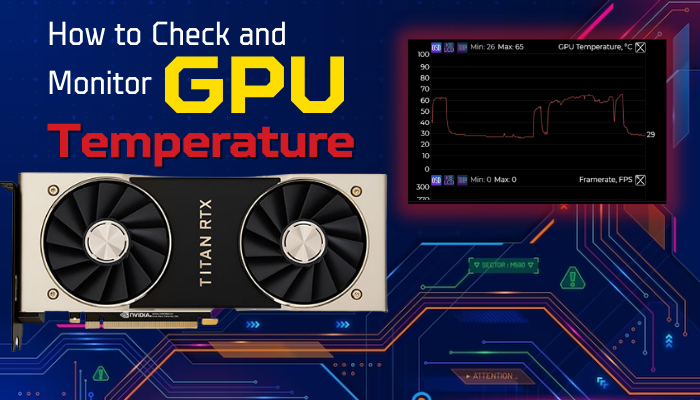
Let’s unfold the checking & monitoring methods of GPU temperature.
6 Most Effective Methods to Check & Monitor GPU Temperature
Before I start explaining the steps of various methods; there are some exceptions and users’ perspectives to consider. For example, checking the GPU temperature isn’t the same as monitoring it.
Checking is a one-time task that you just need a quick peek into, but monitoring the temperature is a continuous process that you’ll do continuously to supervise temperature while gaming or working.
1. View in Task Manager
Among all the methods, viewing GPU temperature with Windows Task Manager is the most straightforward & natively accessible.
You can quickly peek into the Task manager to check the current GPU temperature if your Windows build is Windows 10 18963 and newer. Plus, the driver version must be WDDM 2.4 or the latest.
Here are the steps to check GPU temperature via the task manager:
- Launch Windows Task Manager with Ctrl + Shift + Esc combo key.
- Click on the Performance Tab.
- Select GPU from the left column.
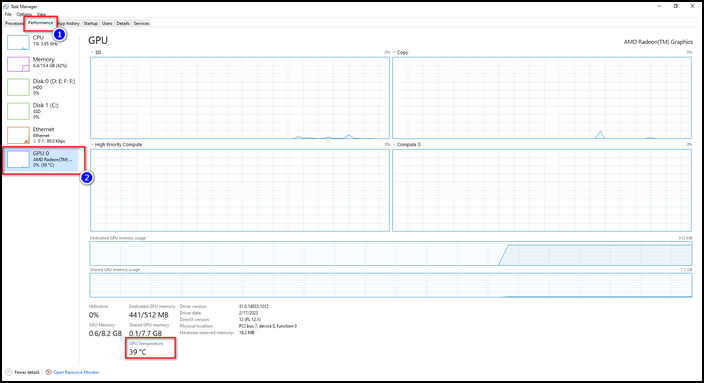
You can see the currently running GPU temp in the marked area in the image above.
Note: You may not find any temperature in the task manager if you don’t have a dedicated Graphics Card.
2. Check with GPU-Z
Those who want more information about their GPU, and the temperature can use the GPU-Z software. In some cases where your Windows Task Manager isn’t showing the temperature of the graphics, this GPU-Z is a worthy alternative.
- Download GPU-Z Sofware.
- Install it in your System.
- Run it from Start Menu / Desktop.
- Tick on the Sensor tab.
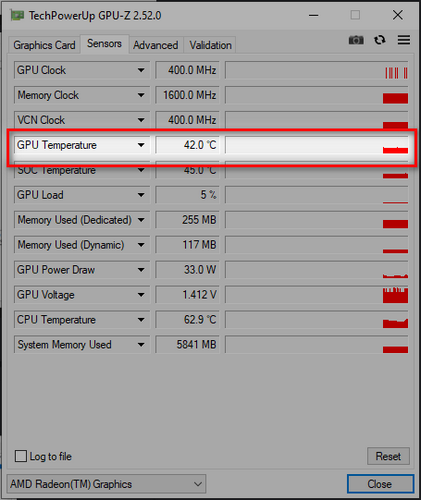
- Check the GPU Temperature.
If you’re bothered to use third-party software, you can use Nvidia & AMD control panels for this case.
3. Using AMD & Nvidia Control Panel
Since you want to avoid third-party applications, default programs like AMD & Nvidia‘s control panel can show you the GPU temperature you might already have installed by default.
Here are the step-by-step GPU temperature-checking processes of AMD & Nvidia control panels:
AMD
You can check the temperature of the GPU and whether your Graphics is integrated or dedicated from the AMD Adernaline software installed on your system.
- Right Click on the desktop and select AMD Radeon Software.
- Search AMD Radeon on Windows Seach Bar and run from there instead.
- Click on the Performance tab.
- Unfold Additional Metrics under the GPU section from the left.
![AMD-control-panel-performance-unfold]](https://10scopes.com/wp-content/uploads/2023/03/AMD-control-panel-performance-unfold.png)
- Find and watch the Current Temperature at the last part of the unfolded list.
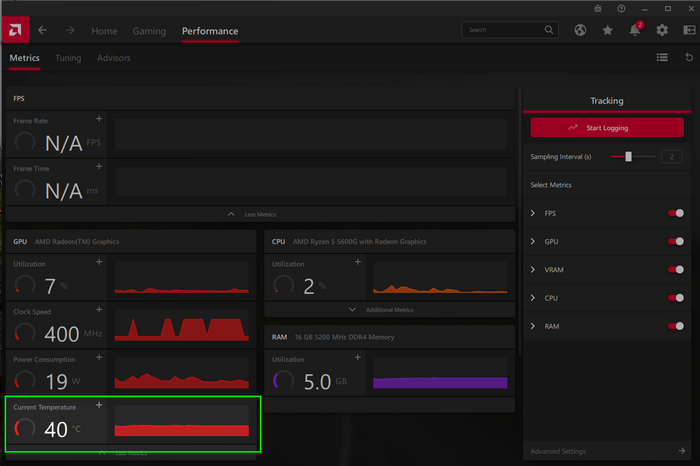
Nvidia
Nvidia GeForce Experience is the software that is required to control and monitor GT, GTX, and RTX graphics cards.
- Search Nvidia GeForce Experience in Windows Search Bar.
- Download it if you don’t have installed & Run it.
- Click the Triangular icon in the top right.
- Click on Performance.
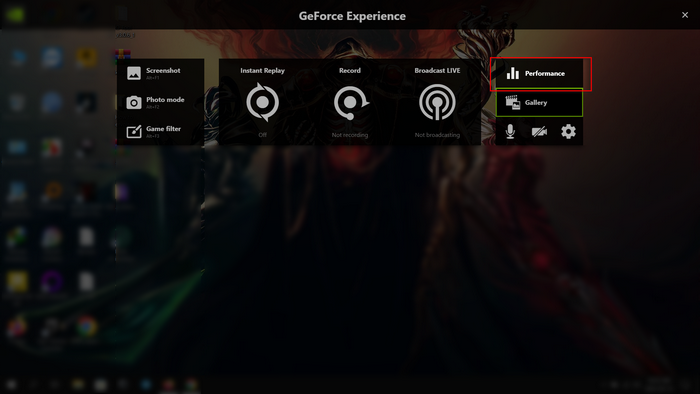
- Look for GPU Temperature Box under Performance Monitoring.
4. Check With HWiNFO64
From the vast choice of PC monitoring programs, HWiNFO64 shows the most intensive pieces of information. It can show more than just GPU information; you can monitor your CPU while gaming with more information.
Here is the process to check or monitor GPU temp using HWiNFO64:
- Download HWiNFO64 from the authentic website.
- Select the Portable or Installer version.
- Unzip the downloaded file with WinRAR or 7-Zip.
- Run 32 or 64-bit files according to your system’s needs.
- Tick the box Sensor-Only.
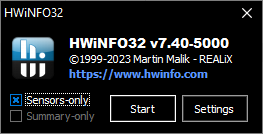
- Click on Start & the software will show the Sensor Status.
- Check GPU Temperature under GPU [#1]: {Your GPU Name} section.
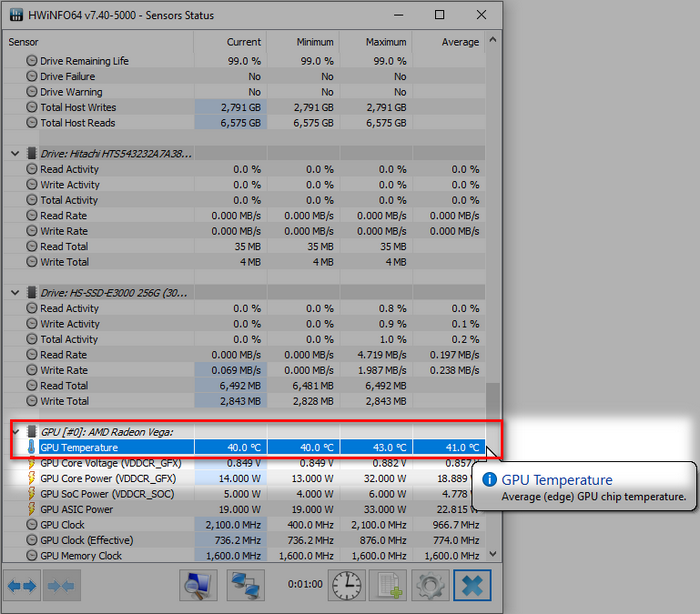
OSD Settings for HWiNFO64
- Click on the Settings icon at the bottom left.
- Select OSD(RTSS) tab from above.
- Click on GPU Temparature.
- Tick the Show Value in OSD.
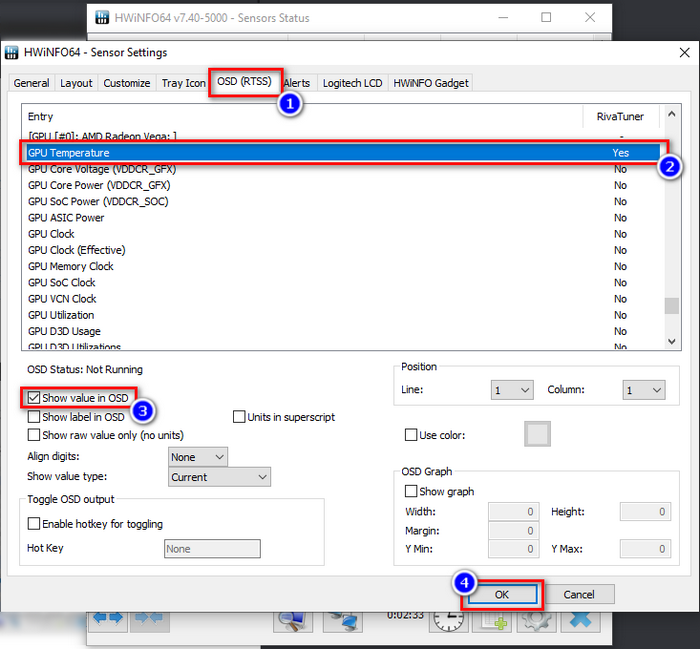
- Hit OK.
5. EVGA Precision X1
Among the wide choices around the web, the Precision X1 from EVGA is the best-looking and robust in my opinion. You can even Sync the color of the UI with your setup.
No, don’t worry if you don’t own a card from EVGA, you can still use it only with a catch that this software only supports Nvidia Cards, not any AMD cards or iGPU. You can just download it from the EVGA website & view the temperature after installing it.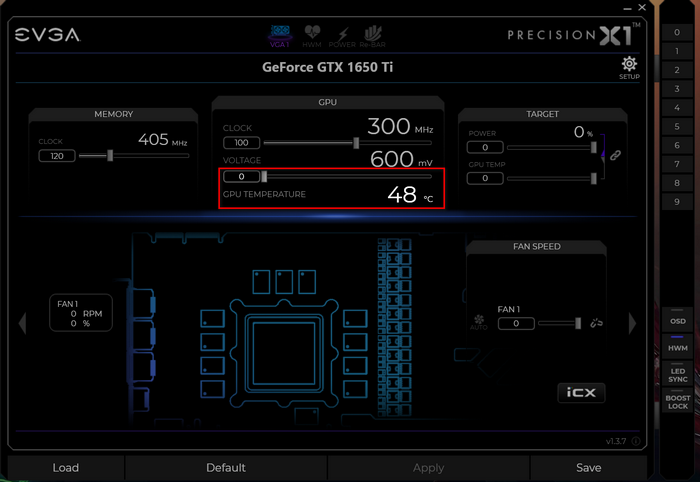
6. Install Riva Tuner (MSI Afterburner).
The MSI Afterburner is one of the most recognized programs for checking Graphics information and monitoring. The best part is that you can manually overclock your graphics to experience better output.
You’ll also be pleased to see the accuracy of the MSI afterburner CPU temperature and GPU temperature. Plus, Riva Tuner can show continuous utilization and temperature while you are in the game.
Don’t worry if your Graphics Card isn’t from the MSI vendor; it works on every Graphics card. But remember, Riva Tuner may not show integrated graphics temperature.
Here is the Step-by-step approach for monitoring GPU temperature with Riva Tuner:
- Download MSI After Burner from the original website.
- Check the RivaTuner Statistics Server box when installing Afterburner.
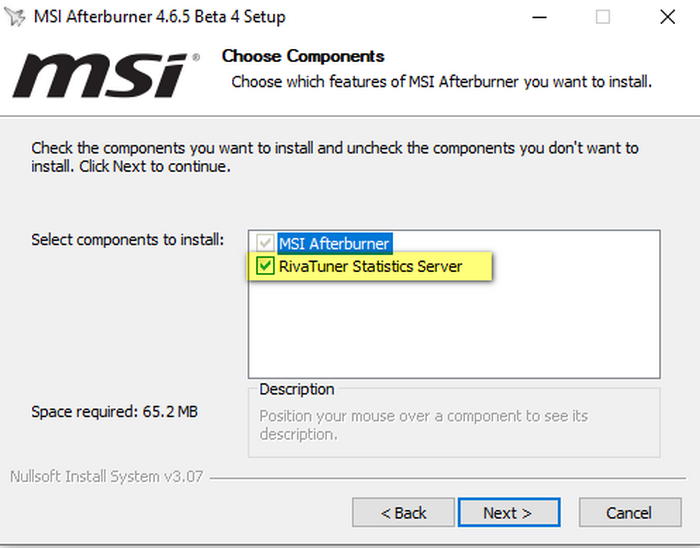
- Install accordingly by clicking Next & accepting the policy.
- Install RivaTuner after Finishing Afterburner install automatically appears.
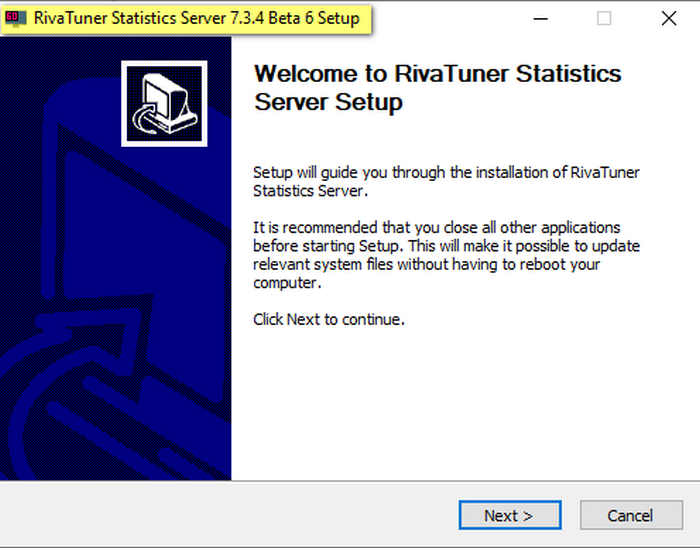
- Check Temperature after launching MSI Afterburner from the Start menu.
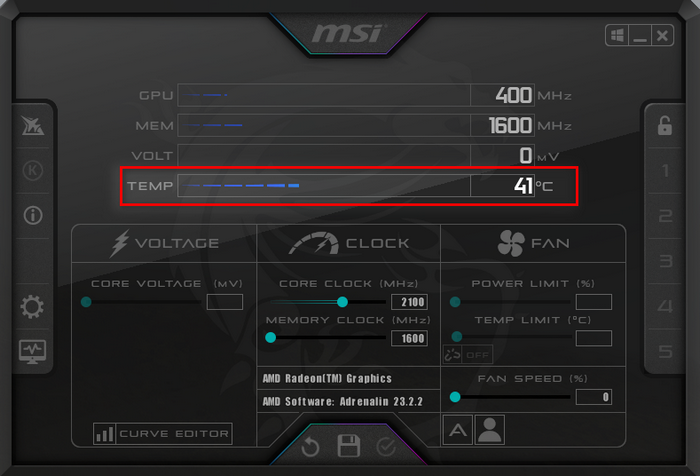
OSD Settings for RivaTuner
- Click on the Settings Icon in MSI Afterburner from the left.
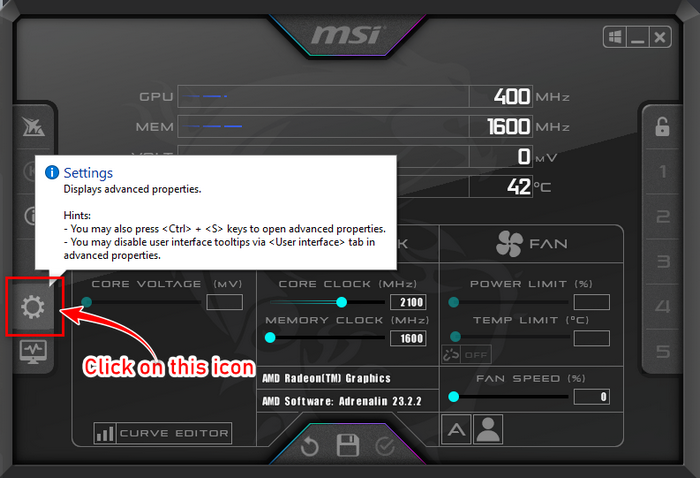
- Select the Monitoring Tab form above.
- Click on GPU Temperature from the list.
- Check the box below Show in On-Screen-Display.
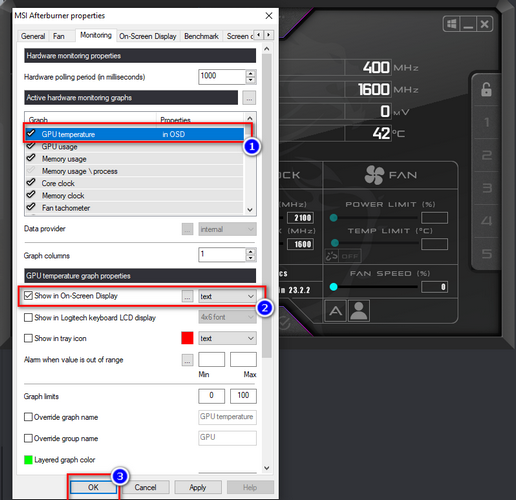
- Hit OK.
Is it Important to Monitor Graphics Temperature Continuously?
Monitoring the GPU is beneficial for a user, if not essential. Although it’s ok to ignore how your GPU is doing if you are not a power user, checking GPUs health or if it’s working properly is a good practice.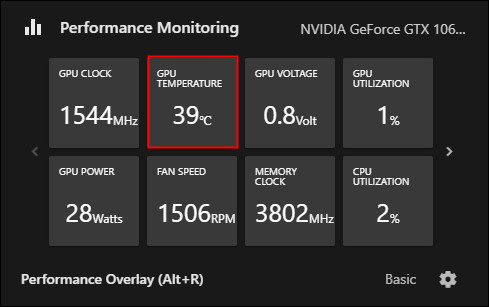
Such suitable care is heavily responsible for GPU longevity, determining how long your GPU will last.
Moreover, your continuously monitors graphics will perform better than an unsupervised graphics card.
Alternatively, continuous monitoring is a must if you give your GPU stress by playing games or rendering high-resolution videos.
Or else, you’ll find the video card of your rig unstable and poor performing, harmed by the continuous overheating on high usage. You won’t know when cleaning the GPU is required or reapplying thermal paste if you skip monitoring.
What are The Ideal Temperatures of the GPU?
The ideal temperature of a GPU is seemingly different from the standard temperature of a GPU. A GPU only gets used for graphics-based works; otherwise, graphics usage or utilization usually stays low, and the temperature stays around the idle temperature of the GPU.
A GPU’s average idle temperature range is 30-40 degrees Celsius if the room temperature is 21 degrees. Afterward, 60-85 degrees Celsius is considered normal if the graphics card is on a heavy workload.
However, the temperature depends on several aspects like room temperature, chassis ventilation, internal cooling system, and GPU model.
But what temperature is too high for a Graphics Card?
Depending on the criteria and model-verity, graphics card temperature should not exceed 90 degrees Celcius or 194 degrees Fahrenheit. If your graphics card stays at such a temperature for a long time, it’ll be damaged gradually.
Hence, you should immediately take steps to lower the temperature. The further section is dedicated to severe temperature control demands.
How Can I Lower the GPU Temperature?
Reducing the overall temperature of the graphics cards is simple. Such simple tweaks in the system and the programs or games you play can drastically decrease the temperature.
You will be pleased to see the result of how bizarrely your default GPU settings cause extra heat without providing adequate performance.
Here are the fixes you should follow to lower the GPU temperature:
Limit FPS with V-Sync or Adaptive Sync
Every monitor has a specified refresh rate concurrently related to the gaming FPS, directly affecting the overall gaming experience.
If you have a monitor of 60Hz and your GPU can generate more than 200 FPS for a specific game, it’s not worth it because the monitor can’t show that many frames. Reasonably gaming monitors come with 144Hz, 165Hz, 185Hz, and more.
Even if you have a 144Hz monitor, you won’t need the 200-300 FPS that your GPU is rendering. So, you can sync your game FPS with the monitor Hz to save some Graphics resources, leaving your GPU in peace.
Turn on V-Sync from your game or Limit FPS according to your monitor’s capability to give your graphics card less stress. You can also enable G-Sync or Free-Sync if your monitor includes the support.
Plays with Lower Resolution
Playing AAA-type games on a higher resolution might give you a luxury feel, but you’ll be shocked to know how this resolution works on your monitor.
Yes, the sharpness & details are indeed the attributes that bring life into games, but does it worthy enough to push the GPU temperature limit?
For instance, if you have a monitor of FHD native resolution and you run your game at QHD or UHD, it won’t give you an efficient outcome. Even if your GPU throws a higher resolution to monitor, it cannot show you that output.
Although you’ll notice better details and sharpness, it’s not as effective as a QHD native monitor could show. So, set your game resolution according to your monitor to experience the proper output without causing GPU overheating.
Likewise, GPU scaling lets you play games on a lower resolution without losing many details on your bit low-tier GPU.
Turn Off Overclocking
Since overclocking your GPU enhances performance, it has to operate at a higher clock speed, generating excessive heat.
But you won’t need extra performance if your monitor doesn’t show much. You can step down the overclocking a bit, which will definitely reduce the temperature of the Graphics.
However, a proper Overclocking profile is efficient on temperature. But an Overclocked GPU generates more heat than usual, as it has to push the performance. Turning off the overclocking of your GPU is safer when it’s not in use.
Use a Powerful Cooling System
High-end PC components are demanded among competitive gamers. Even I configured my entire system as a gaming PC to keep peace of mind. I play Triple-A games like Read Dead Redemption, Vahalla, GTA 5 &, etc.
But I dared only run those games once I added a powerful cooling system to my PC.
You can play at high resolution with higher FPS by adding an effective cooling system to tame the GPU temperature rise.
Ensure Proper Airflow & Ventilation
Proper airflow is necessary for a performance-centric rig. Your PC should choose a casing with many cavities to inhale & breathe out air.
Or else the heat generated by GPU and other components will cycle through itself again & again, which will make the PC interior as hell. You need to remember it while choosing a casing for your rig.
Adding more chassis fans into a well-ventilated PC case will increase performance with a lower GPU temperature. And the clearance of a GPU is also crucial for better airflow.
Clean Your Desktop & GPU
Whether you have a powerful GPU with a proper cooling system or a decent one, cleaning after a while is necessary. Depending on your ambient, the vents and holes get covered with dust easily after some time.
Therefore, you must clean your GPU, especially the whole interior, to keep the air running through the vents and heatsinks responsible for cooling the Graphics Unit & CPU.
FAQs
Does Nvidia have a GPU temp monitor?
Yes, Nvidia and AMD have control panel software that can show the Graphics temperature.
How do I know if my GPU is overheating?
You can feel the air released from the cabinet and hear if your GPU fan is spinning at a higher RPM.
Does overheating GPU damage it?
Heat is the enemy of electronics, so overheating will also damage the GPU and other components.
Conclusion
Keeping track of the temperature is a worthy habit to practice if you want to keep your GPU alive for a long time, retaining the performance intact. You’ll know if something goes wrong if you continuously monitor the temperature.
You can act fast as you are aware of the temperature rise. And don’t forget to leave a comment, as you might carve for more information. We’ll try to answer them ASAP.



